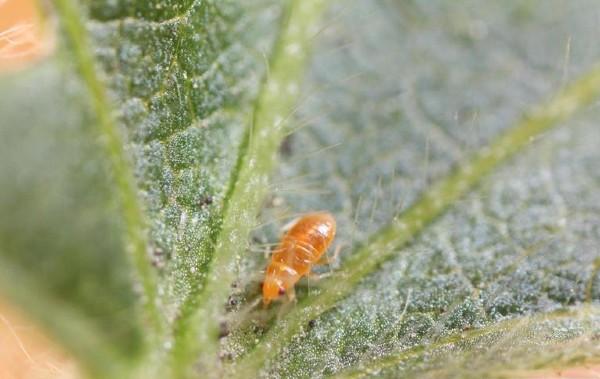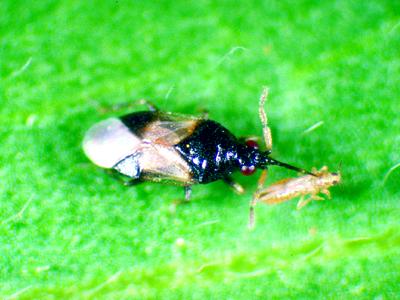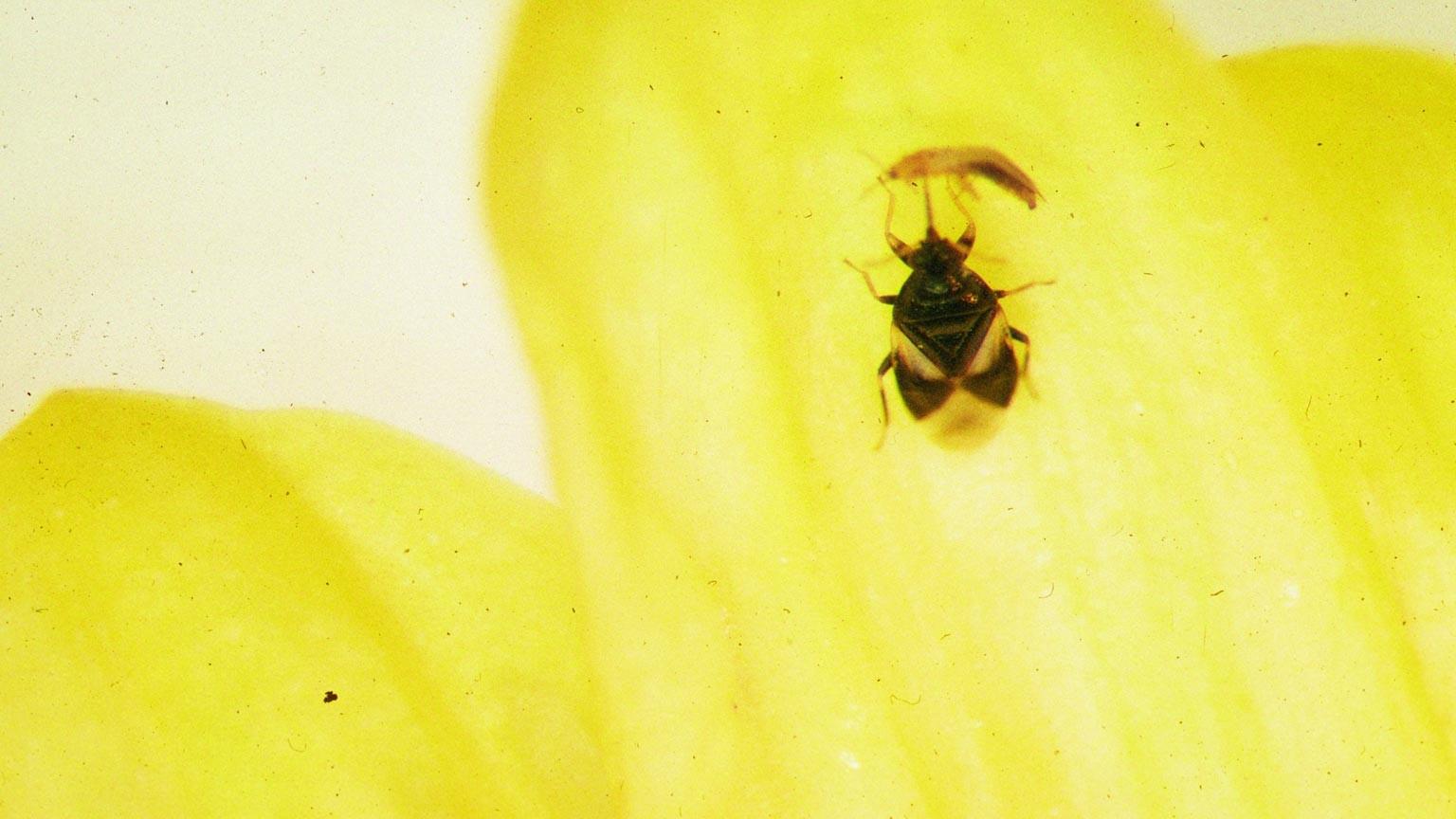About minute pirate bugs
-
Also known as flower bugs, these are among the smallest of the “true” bugs and one of the first predators to appear in the spring.
-
In spite of their tiny size, minute pirate bugs are fierce predators, clasping their victims with their front legs and then inserting their needle-like beaks to drain their victims dry.
-
They can even deliver a surprisingly unpleasant bite to the unwary gardener who messes with them!
-
Minute pirate bug nymphs and adults are very active general predators of all life stages of many different types of smaller soft bodied pests.
-
They are capable of eating 30 or more spider mites a day.
Important species in Maryland: Orius spp. (minute pirate bug, insidious flower bug)

Minute pirate bug nymph. Photo: Adam Sisson, Iowa State University, Bugwood.org
Life stage(s) that feed on pests: Nymphs and adults. Adults also feed on pollen and nectar.
Insect(s) fed on: Aphids, spider mites, thrips, psyllids, whiteflies, small caterpillars, and insect eggs.

Minute pirate bug feeding.
Appearance of minute pirate bugs
Eggs: Tiny eggs are inserted into plant tissue with only a tiny white cap showing; easily overlooked.
Nymphs: Pear-shaped, yellowish to reddish-brown in color, wingless, about the size of a small aphid.
Adults: Very small (~1/16-1/5” long), somewhat oval shaped body, black or purplish with white wing patches; wings extend beyond tip of abdomen.
Where to find: Near the insects they eat on plants such as corn, tomatoes, beans, and strawberries. Adults may fly to other plants to find prey, and are especially common near spring- and summer-flowering shrubs and weeds that can provide food when prey is scarce.
How to attract and conserve: Grow flowering plants to provide the preferred habitat as well as the nectar and pollen needed by these tiny bugs. Avoid the use of broad spectrum pesticides, and of soil-applied systemic pesticides, which minute pirate bugs may ingest by sucking plant juices for moisture.
Contributors: Mike Raupp, Jon Traunfeld, and Chris Sargent
